VERY RARE! WWII Ocquerre France August 29th 1944 4th Infantry Division & 2nd Armored Liberation Flag

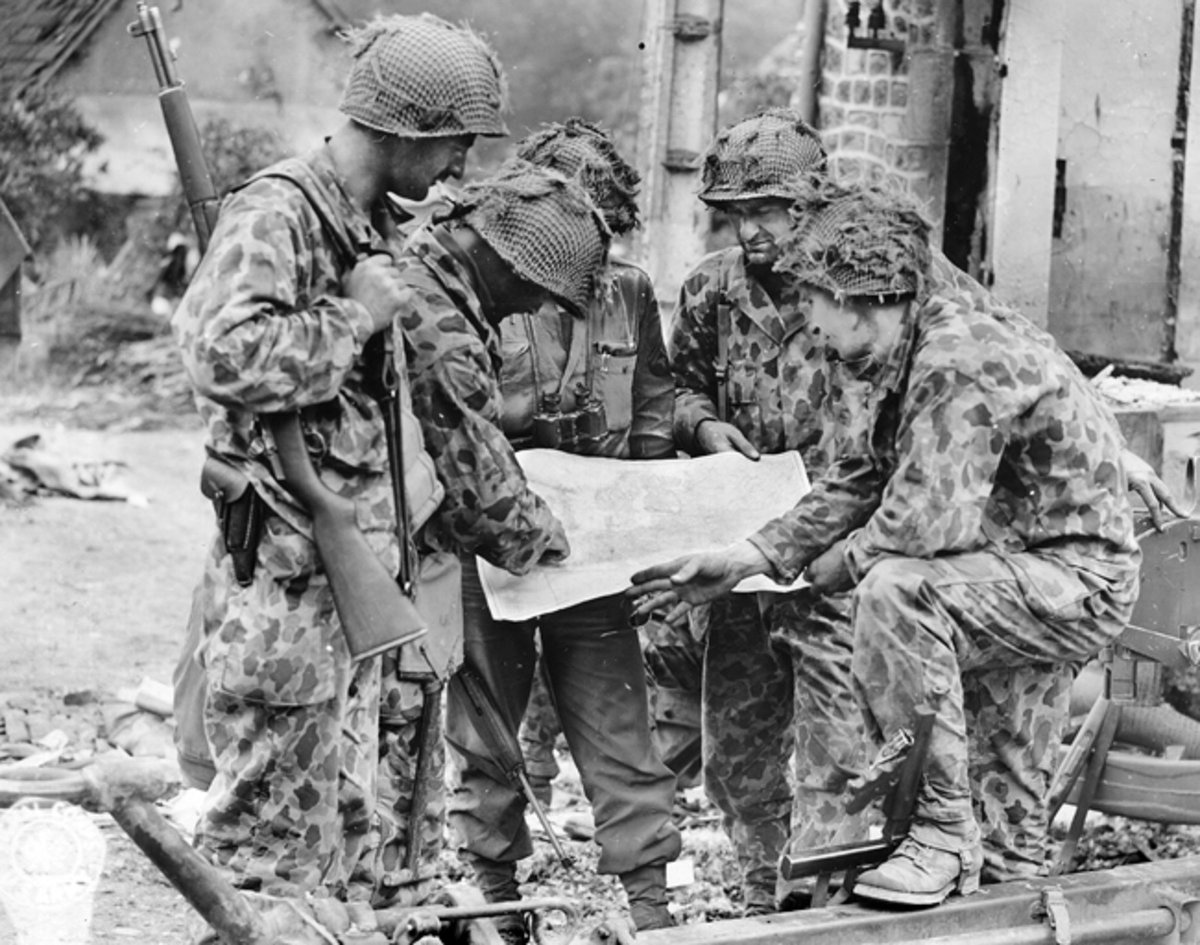
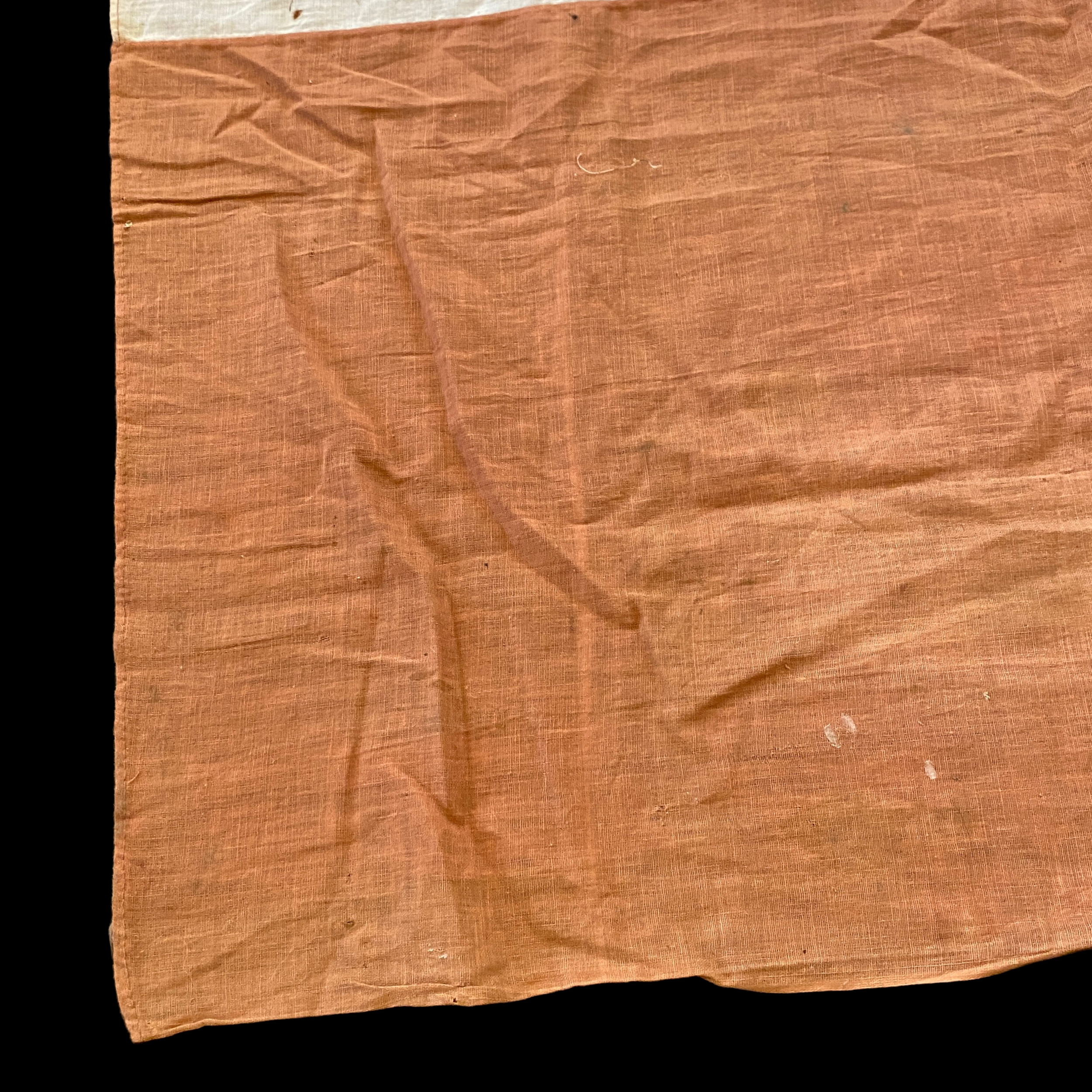

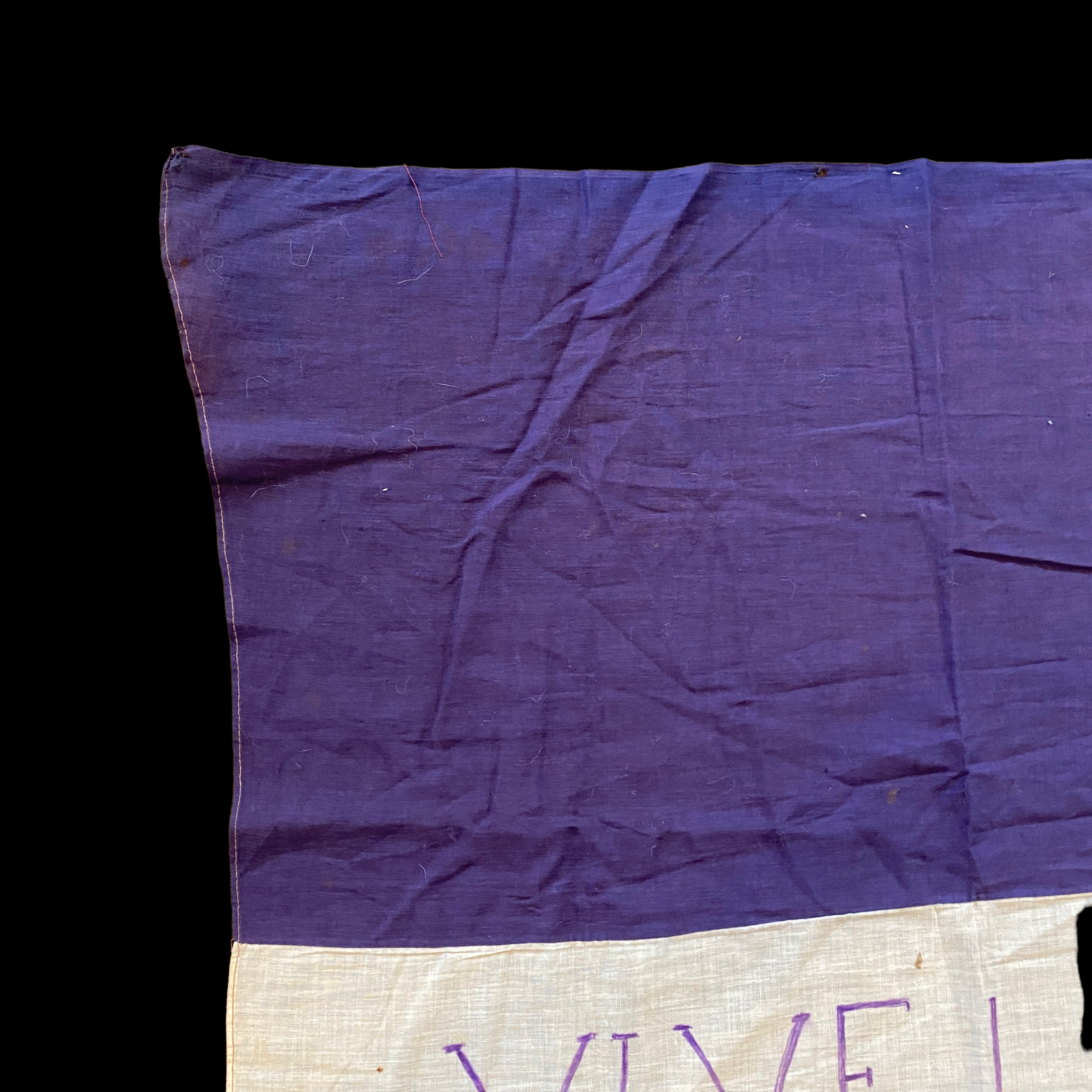




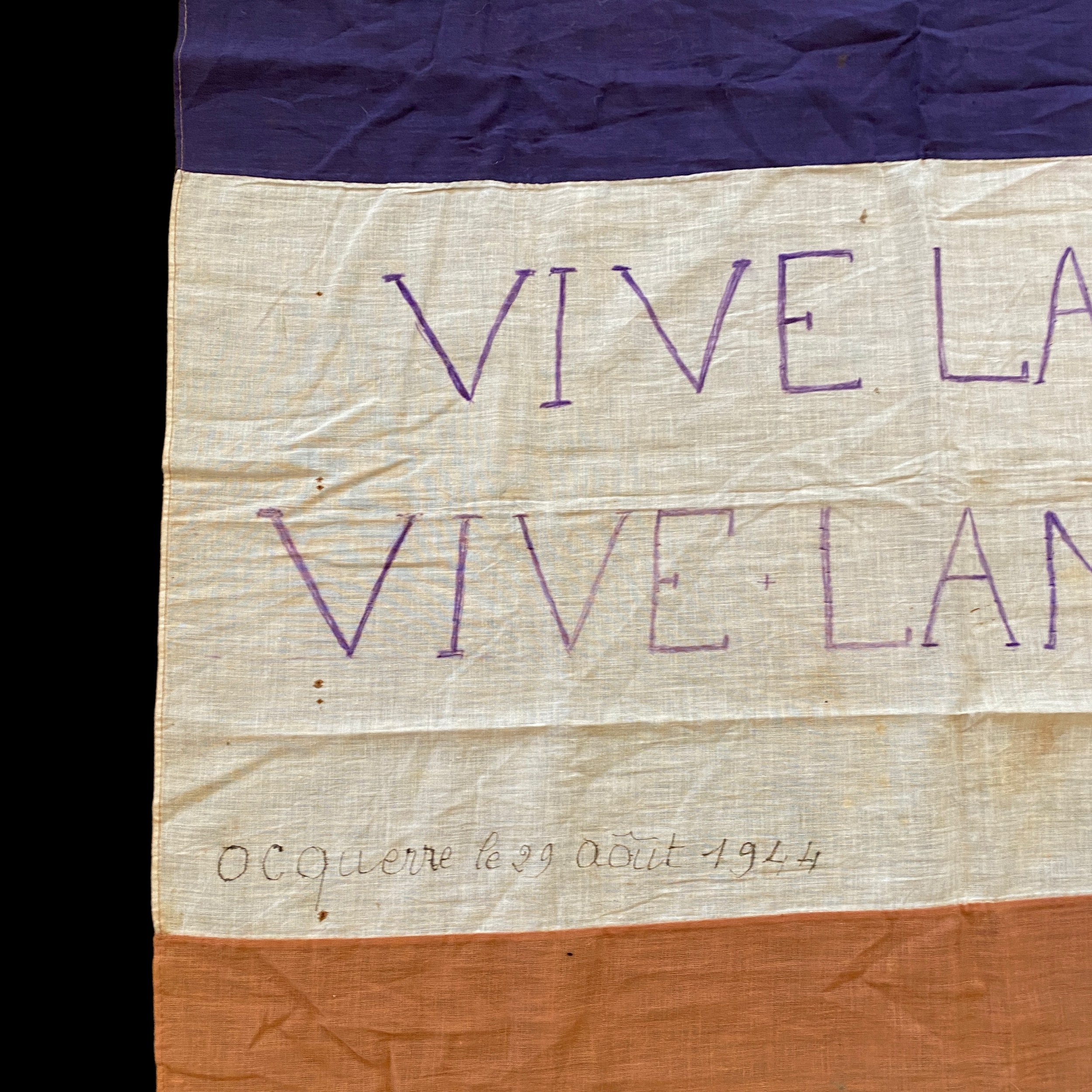





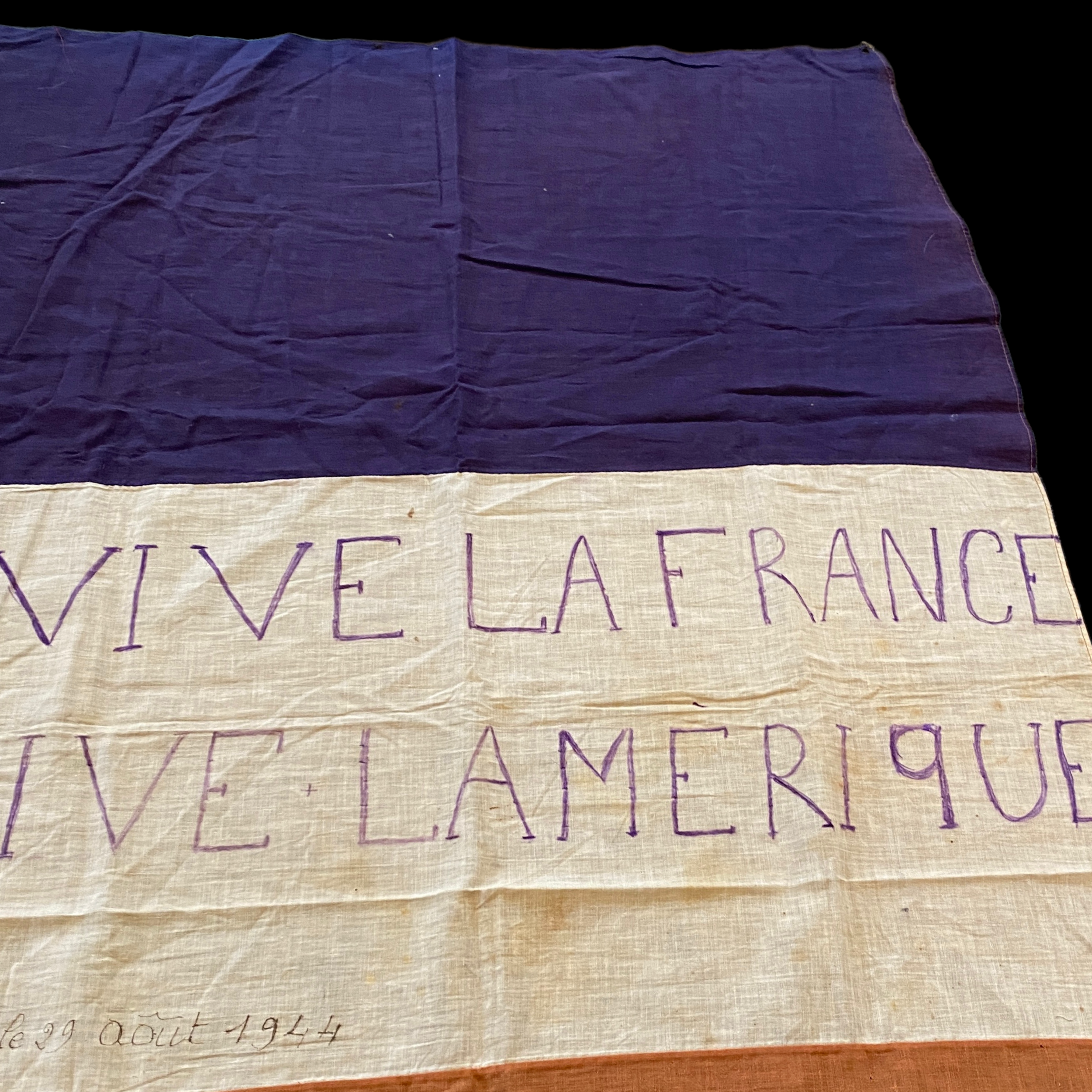

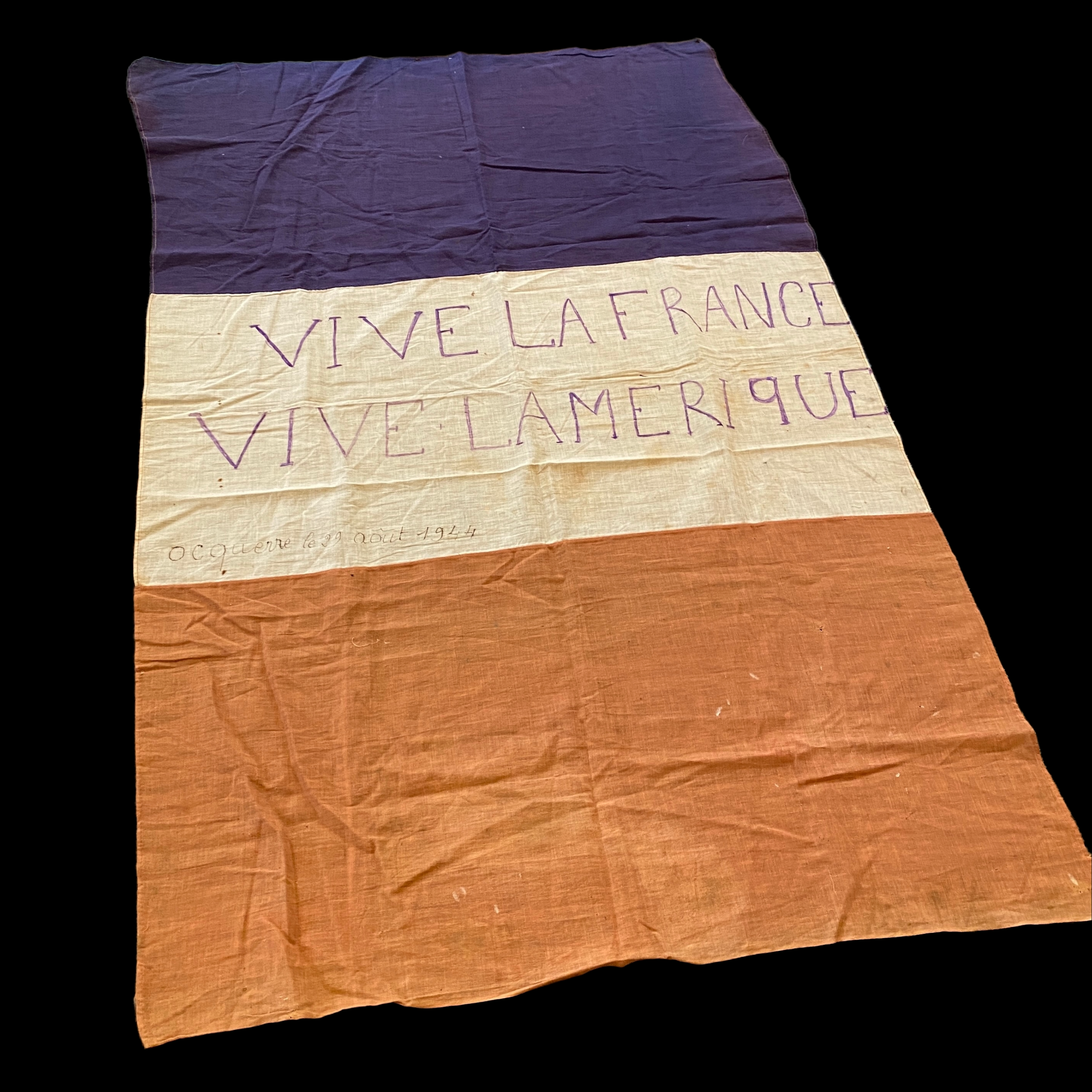
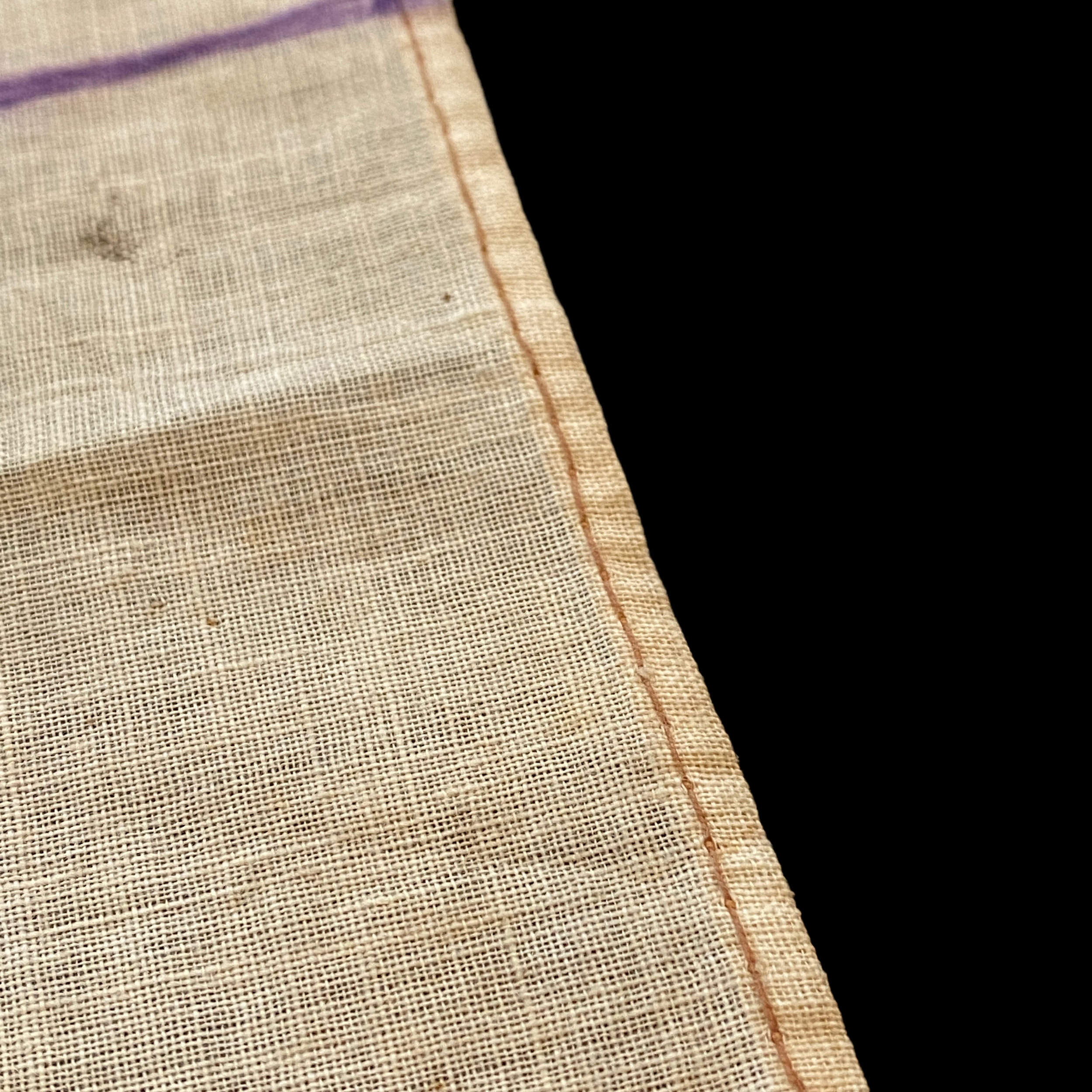
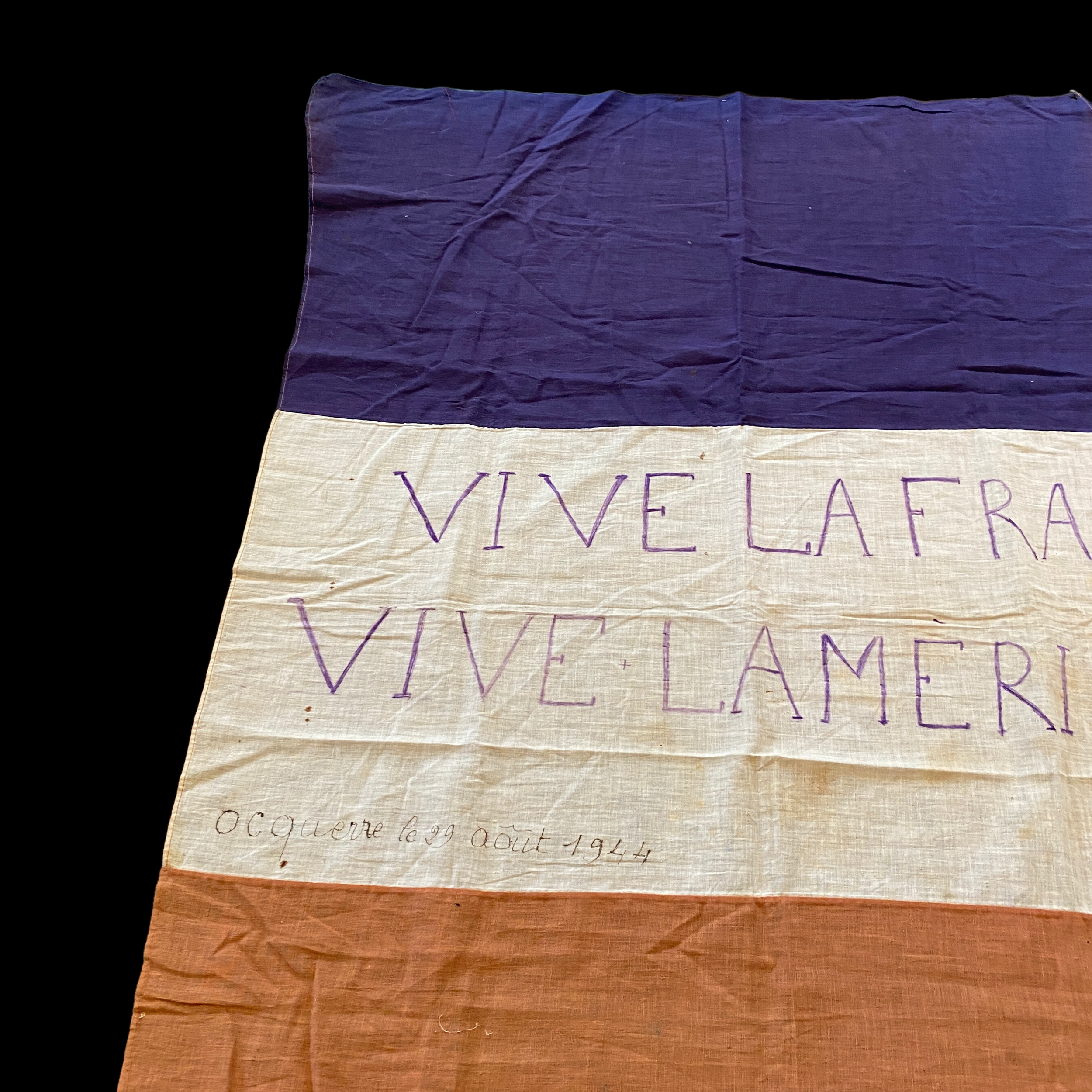



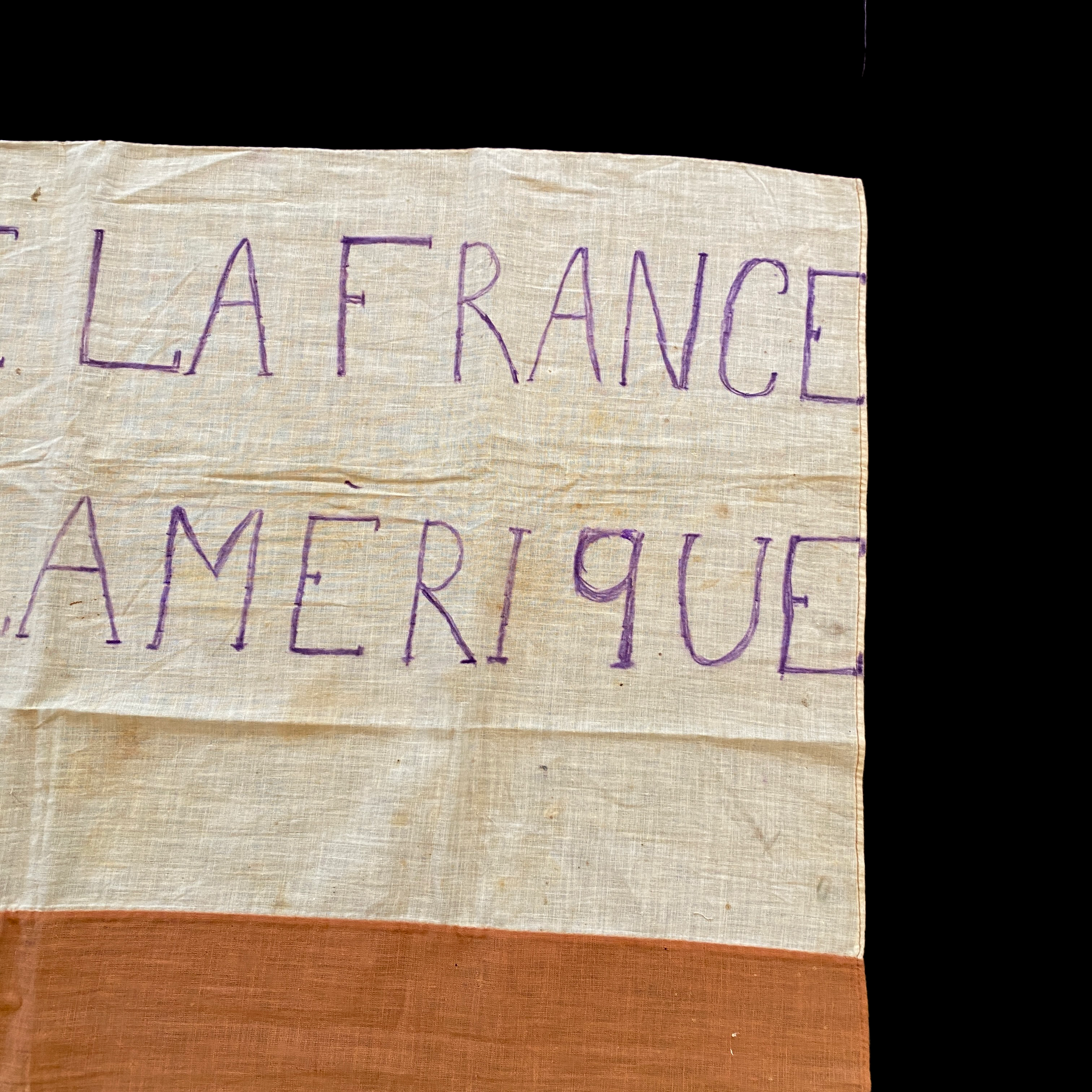
VERY RARE! WWII Ocquerre France August 29th 1944 4th Infantry Division & 2nd Armored Liberation Flag
Comes with hand-signed C.O.A.
This incredibly rare and museum-grade WWII handmade French liberation flag was hastily created and used for the American and British Allied liberation of Ocquerre, France on August 29th, 1944 ( roughly 3 months following the Allied D-Day landings in Normandy). The Allied liberation of the French town of Ocquerre occurred shortly after the liberation of Paris on August 25th, 1944. The liberation of Paris was one of the first major victories of WWII for the Allies and the French citizens as this region had been occupied by Germany since June of 1940.
In anticipation of the Allied liberation of their town, many citizens in France secretly made Allied “Liberation Flags”. Their make-do attributes are nearly limitless. A lack of specific knowledge about the flag itself, a lack of time, and a lack of suitable materials in an utterly devastating region combine to result in a collection of flags where nearly every example is unique and rare. French civilians caught making liberation flags during the German occupation were executed immediately.
What makes this Ocquerre, France liberation flag incredibly rare is not only its providence back to the French town but it is one of very few WWII liberation flags with original handwriting on the liberation flag. Written “VIVE LA FRANCE - VIVE LAMERIQUE - OCQUERRE LE 29 AOUT 1944” is translated “LONG LIVE FRANCE - LONG LIVE AMERICA - OCQUERRE AUGUST 29, 1944”.
Many of the German soldiers fleeing the liberation of Paris retreated to the French town of Ocquerre, located adjacent to Paris. After the German surrender on August 25th, 1944 by Dietrich von Choltitz, commander of the German garrison and the military governor of Paris, General Patton and the same soldiers that just liberated Paris pushed further into France to liberate the town of Ocquerre, France. This U.S. liberation was done by the U.S. 2nd Armored Division and US 4th Infantry Division.
4th Infantry Division:
On June 6, 1944 (D-Day), the "Ivy" division was the first US unit to land on Utah Beach. Two months later, on August 25, 1944, it liberated Paris. In September, it crossed the border into Germany, fighting in the Hürtgen Forest and in the Battle of the Bulge. In late March 1945, the 4th crossed the Rhine River and a few weeks later captured the German city of Nuremberg. By the end of April, the unit had advanced deep into Bavaria.
2nd Armored Division:
The 2nd Armored Division landed at Omaha Beach in Normandy on June 9, 1944, three days after the initial Normandy landings, and operated in the Cotentin Peninsula, later forming the right flank of the Operation Cobra assault. The division encircled the 2nd SS Division Das Reich and the 17th SS Division Götz von Berlichingen around Roncey, and destroyed most of their armored equipment. At La Chapelle, a 2nd SS Panzer column was attacked at point blank range by 2nd Armored Division artillery. Over the course of two hours American artillery fired over 700 rounds into the column. The Germans suffered the loss of 50 dead, 60 wounded and 197 taken prisoner; material losses included over 260 German combat vehicles destroyed. Beyond the town, the 2nd Armored engaged another column, killing 1,150 German soldiers and destroying an additional 96 armored combat vehicles and trucks. The U.S. 2nd Armored Division destroyed 64 German tanks and 538 other German combat vehicles during Operation Cobra, while itself losing 49 tanks. The 2nd Armored Division inflicted over 7,370 casualties on the Germans, while suffering 914 casualties of their own. This is approximately an eightfold disparity. The 2nd Armored blunted Operation Lüttich, the German counterattack on Avranches, then raced across France with the rest of the First Army, reaching the Albert Canal in Belgium on September 8. On September 18 it crossed the German border near Sittard and took up defensive positions near Geilenkirchen. On October 3, the division, now commanded again by Major General Harmon, launched an attack on the Siegfried Line from Marienberg, broke through, crossed the Wurm River, seized the town of Puffendorf on November 16, and Barmen on November 28.
This incredibly rare hand-sewn World War II liberation flag done for the liberation of Ocquerre, France from German divisions would make an incredible addition to any World War II collection. Please note that this flag comes with a certificate of authenticity and photo verification for double authentication purposes. In order to make sure that this artifact gets to you safely it will be fully insured for its value as well as come with tracked shipping and signature confirmation delivery.